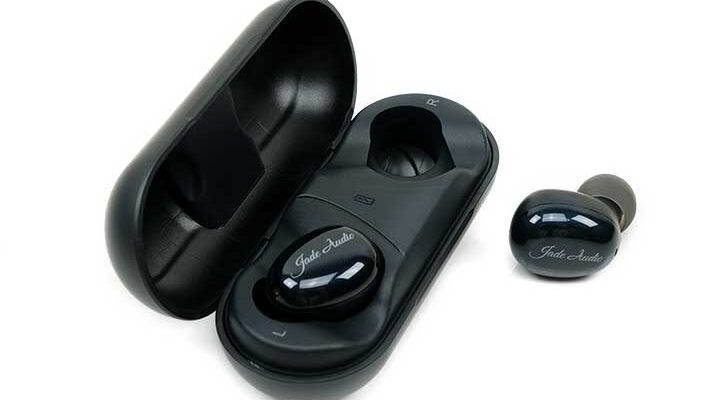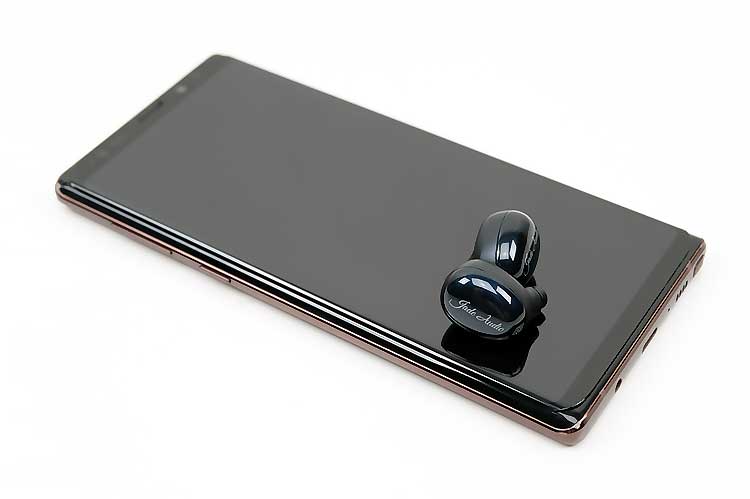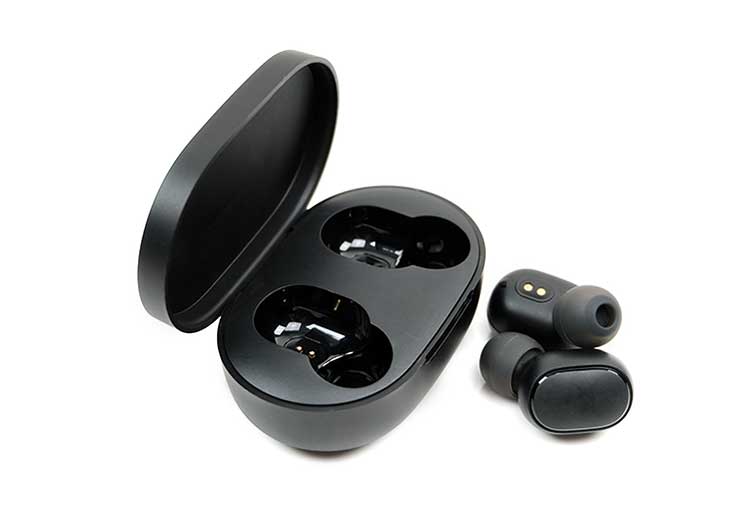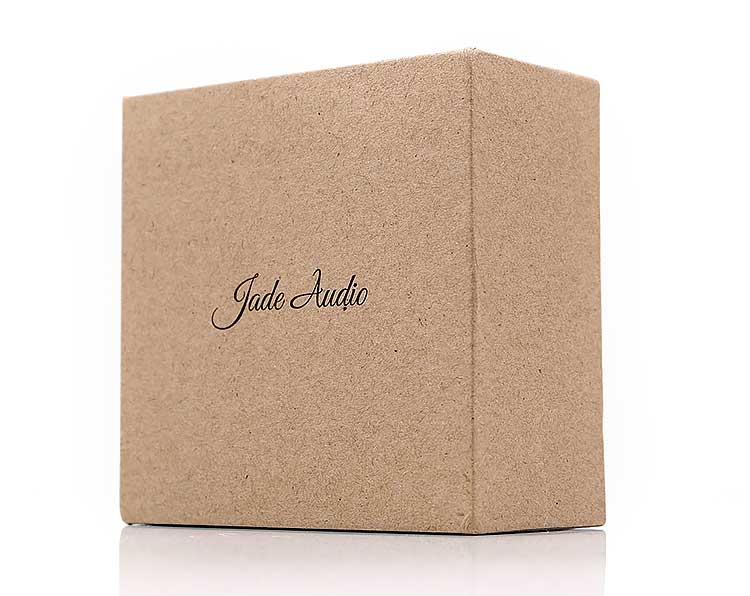Sound Impressions
Summary
The EW1 is not as V-shaped as the likes of the Airdots or the MPOW M5. In fact, I would class this as more M-Shaped using the stock tips. This is a warm and punchy mid-bass response, a bit of bass bleed into the lower-mids, a forward vocal presence and a sparkling treble.
The EW1 has a certain appealing balance to its presentation that favors rock over EDM. It is by no means bass shy just not a sub-bass monster. Even the Airdots can muster heavier sub-bass hits nevermind the physicality of the bigger M5 driver sound which dominates both competitors.
The aptX decoding capability really helps deliver some good dynamic range and some credible lower-mids on the EW1 which is where the strength of this TWS lies. I sense a 1-3k bump on the EW1 pushing vocals forward which stretch the staging in an engaging manner.
The weak spot of this TWS is the treble which can be accentuated with tips such as the Final E or biflange if you are after a more neutral sound. Simply put, it is not the most natural-sounding top end and from time to time it can upset the harmonic balance of the upper mids. Percussion timbre is a little steely and lacking in body as a result.
Vocals, lower-pitching breathy female ones at that, sound relatively clear and forward. However, when they push into a higher pitch and throw in some dramatic percussion you can hear that sharp overtone creeping into the sound. Male vocals do not suffer from that problem and benefit from the mid-bass warmth creeping more into their timbre and balancing out the treble contrast.
Staging
The EW1 is more on the intimate side for staging but delivers enough clarity and separation to hold its own and never really sound terribly compressed. The EW1 offers more height and headroom compared to the KZ T1’s tapered top-end which in turn really helps the forward mids stay relatively open sounding.
The depth is average. You go get some mid-bass punchiness for sure and it will not sound shallow per se but of the 4 TWS covered thus far this one has the most sub-bass roll-off. It does rob it a little bit of some nice PRaT that the likes of the M5 and even the Airdots can deliver. As a result, you tend to find yourself drawn more into the mids on the EW1 for most of your listening.
Wireless Performance
Paring
I would like to have given the EW1 a clean bill of healthy on pairing but sadly it does not seem compatible with my Samsung Note 9. I am not sure if this is anecdotal but having tried several times I can get an initial pairing but it drops after a few minutes and then repairs again automatically. In between then, a warning comes up stating the right has not bonded with the left.
I have no such issues pairing with a Huawei P20 or Sony’s 1Z flagship and both show aptX decoding as default so it is not a consistent issue and it may only be related to Samsung or even just my Note 9 setup.
For the other pairings, you will see left and right show up and I normally pick right and pair and it works fine.
If you try following the manual your head will spin regarding master-slave orientation during pairing. The English instructions are clumsy. You can and probably should link both left and right via Bluetooth but I find it is not necessary for the EW1 buds to work properly in stereo.
Stability & Distance
We tested 4 sources in total including the Samsung Note 9 before we ditched it due to pairing issues. That left us with FiiO’s M11, the Sony 1Z, and the Huawei P20 smartphone. Out of those 3, the P20 was the most stable and both the Sony and P20 acquired the greatest distance of about 10-15 meters behind one wall.
The M11 was the most unstable of the three. Whilst it could operate at the same distance also the aptX signal stability was weaker with a choppier sound. The Sony had a bit more break up than the P20 but less than the M11. Smartphones are still king really for BT connections.
Latency
With no aptX LL, the EW1 will show a tiny bit of lag on high bitrate video but fairly stable for sync on lower bitrate YouTube clips. Using VLC Media player on a Windows 10 platform and connecting via BT we had a slightly less lag compared to the MPOW M5’s aptX performance but still required a 0.2-second correction to feel totally comfortable with the quality of the sync.
The other slight wireless performance issue with the EW1 is the high noise floor. It has a bit of hiss on quiet passages which I have yet to hear on the likes of the M5 and the KZ T1. I hear this a lot with my PC/EW1 BT connection when watching movies more than audio on smartphones pairings.
Comparison Ladder
MPOW M5
$49.99
Technical
The M5 is quite similar in terms of audio features with cVc 8.0 noise-canceling, BT5.0, as well as aptX decoding capability. It is also a single dynamic driver configuration though I suspect the driver might be a shade larger than the EW1. The M5 IPX rating is higher at IPX7 compared to the IPX5 of the EW1.
The M5 is the bigger of the two TWS buds. It also has a physically bigger charging case. The EW1 does have a longer individual battery life by around an hour or so but both are excellent at 5 hours upwards to 6 for the EW1. The M5 charging cradle capacity on the M5 is better at 35 hours compared to the smaller EW1 21-hour case rating. Both are charged via micro USB which is meh for 2020.
I much prefer the touch controls of the EW1 over the physical controls of the M5. After a while I find myself adjusting the M5 in my ear due to discomfort from pressing them too much.
Comfort and isolation are similar on both though the M5 sticks out of your ear a bit more. I do prefer the stock M5 tips over the Jade EW1 equivalents and I tend to slip on Final E tips onto the EW1 which is a shade cleaner and more spacious sounding.
Performance
Of the two the M5 has a smoother pairing process and better stability, especially from distance. The M5 was rock solid on all our tested smartphones and yes, paired just fine with the Note 9.
The M5 was also not as choppy over distance as the EW1 using DAPs. Both have latency issues on high bitrate audio on laptops with 0.2 seconds sync on both TWS having to be corrected. I did not notice any latency on playback controls though and both TWS/source connections felt responsive for controls using aptX at distance.
Tuning
The M5 is more v-shaped and full-bodied compared to the EW1. The EW1 has some mid-bass warmth and a better midrange balance in terms of positioning and clarity. Vocals and lower-mids guitar work have more presence on the M5 whereas on the EW1 it can sound a bit leaner.
The M5 treble is also a little more relaxed and I think that works better at this quality level. I suspect the upper mids and treble of the EW1 is a little overworked here as there is some steeliness in its harmonic balance with sharper overtones. The M5 sounds fuller and a little more natural for percussion and higher-pitched vocals. The EW1 timbre sounds a little off by comparison.
Sub-bass is stronger, deeper and more physical sounding on the M5. I suspect the driver on the M5 is the bigger of the two TWS here. The EW1 has a punchy mid-bass/lower-mids sound that works well for rock genres and some pop but it rolls off a little more on the low-end compared to the M5 so not as powerful sounding.
KZ T1
$42
Technical
The KZ T1 also uses BT5.0 and touch controls like the EW1 but lacks an IPX rating and aptX decoding capability. It’s aggressive physical contouring and more ‘audiophile’ fitting is more comfortable than the EW1 but the sealing on the EW1 is better. I switched tips also on the KZ T1 to Symbios to improve that and its general sound performance.
Internally, the KZ T1 uses a hybrid BA and DD configuration compared to the single 6mm DD of the EW1. You will get two very different timbres on these 2 TWS.
Battery life on the T1 is terrible at just 3 hours for the drivers compared to 6 for the EW1. Charging cases, (both micro USB), are rated evenly at 21 hours each but game, set and match to the EW1 for just having to be fueled up the 3 times instead of the 7 for the KZ T1.
Performance
The KZ T1 has stability issues for me and its pairing is even more fraught with difficulties than the EW1. Having said that it will pair with my Samsung Note 9 and the EW1 does not but its prone to tons of resets when pairing and does not always work out of the box. AT least for everything else the EW1 pairs fairly smoothly.
For stability and distance, the KZ T1 was the worse performer of the two with drop out on DAPs such as the M11 about 1-2 meters earlier than the EW1. Both did well on the Huawei P20 with a similar distance but some choppiness was apparent on the T1 long before I got it on the EW1 when walls were introduced. Remember the KZ t1 is on SBC whereas the EW1 is on aptX so that is an advantage for the Jade right there.
Tuning
Tale of two stories here. The T1 suffers from a high degree of treble roll-off that robs it of air in the mids. The EW1 does have more treble presence and extension and by default better headroom as a result.
However, the EW1 dynamic driver low-end sounds a little ‘tiny’ in comparison to the power of the T1 dynamic driver. The mix of the BA/DD timbre on the K1 also delivers a little more speed and contrast compared to the EW1. Vocals sound a shade further forward on the T1 compared to the EW1.
I am still not convinced it is a great mix of drivers though and the lack of aptX does mean the T1 can sound more compressed, especially if you are looking for vocals to breathe. Here, the EW1 sounds the better of the two for mids clarity and resolution. It also sounds the more open of the two, especially on the lower mids.
Mind you the EW1 has its own set of timbral issues sounding slightly glassy and steely on the upper mids at times compared to the overly warmed up and compressed sound of the T1.
Xiaomi Redmi Airdots TWS
$29.99
Technical
Stylistically the most similar in looks to the EW1 but a heck of a lot cheaper in materials and application. Surprisingly, the only one so far of the 4 compared here to have some level of apps integration with Dotdroid.
The Airdots is also BT5.0 but it lacks aptX and AAC, (SBC max) and rated at IPX4 element resistance instead of IPX5 of the EW1. The battery life is a little shorter also at 4 hours with a meager 16-hour capacity in its charging cradle. The cradle is very small, even smaller than the EW1 case but that lower battery life on both driver and cradle makes it less durable for travels than the Jade.
The Airdots also has a physical control system and no touch controls. That’s a pain similar to the M5 and places the touch-sensitive EW1 at an advantage.
Performance
I felt the Airdots pairing and stability to be a bit better than the EW1. For one, the Airdots works on my Samsung Note 9 whereas the EW1 simply wouldn’t hold a pairing. Two, the stability at a distance was prone to less choppiness and interference on weaker DAPs with the Airdots. The EW1 was just fine on the smartphones but once we dipped down to DAPs the Airdots seemed more stable.
Of course, the complete lack of volume control on the Airdots faceplate buttons kills it as a distance warrior. The EW1 makes much more sense for distance control.
Tuning
The better resolution and layering from the aptX capable EW1 beats out the SBC and more compressed sound of the Airdots. However, the one thing the Airdots has which the EW1 does not is ‘low-end tapability’ or PRaT. Sometimes, I can give up the better balance and detail of the EW1 for the simpler sub-bass fun of the Airdots and it does work quite well.
We compared them both on Michael Jackson’s Behind the Mask and it was so clear that the EW1 was delivering on detail with a wider soundstage and much better layering. But the Airdots went that bit deeper, the bass guitar had more “bounce” as I like to call it. The Airdots also have a bit less steeliness in its upper mids and treble which might be the more forgiving of the two.
I can understand why some casual listeners might find that Airdots timbre and sub-bass presence more addictive. For everyone else the EW1 balance, dynamic range and more open sounding mids will win out.
Our Verdict
The Jade Audio distinguishes itself with its technical capability for such a low price. You get a reasonable design, stellar battery life and charging cradle capacity, aptX, and IPX5 for $50 or less depending on where you shop.
The quality of the sound is middling based on what I have heard so far at this price point. It has a more sensible balance than the KZ T1’s warmed up overtone and a more open and detailed midrange sound than the Airdots.
You can definitely “hear” some FiiO sensibilities in the tuning and if you are in any way an audiophile you might prefer the dynamic range the EW1 can offer with aptX. However, that steely treble and lack of bass extension prevent the EW1 from sounding as pleasing as the M5’s more natural timbre and superior power.
Overall, plenty of solid features including aptX and brilliant battery life for a low price make the budget EW1 a really good long-distance travel TWS. However, a few performance issues and some treble imbalance prevent the EW1 from grabbing top spot from the MPOW M5.
EW1 Technical Specifications
- Impedance: 16Ω
- Driver unit: 6mm dynamic driver
- Connectivity: Bluetooth 5.0
- Frequency response: 20-20000Hz
- Bluetooth protocol: aptX/AAC/SBC
- Standby time: 80 hours
- Call Time: 6 hours
- Music time: 6 hours
- Battery life of charging case: 21 hours
- Charging Time: 2 hours
- Connections: Micro USB
- Weight: 4.3g per earbud










